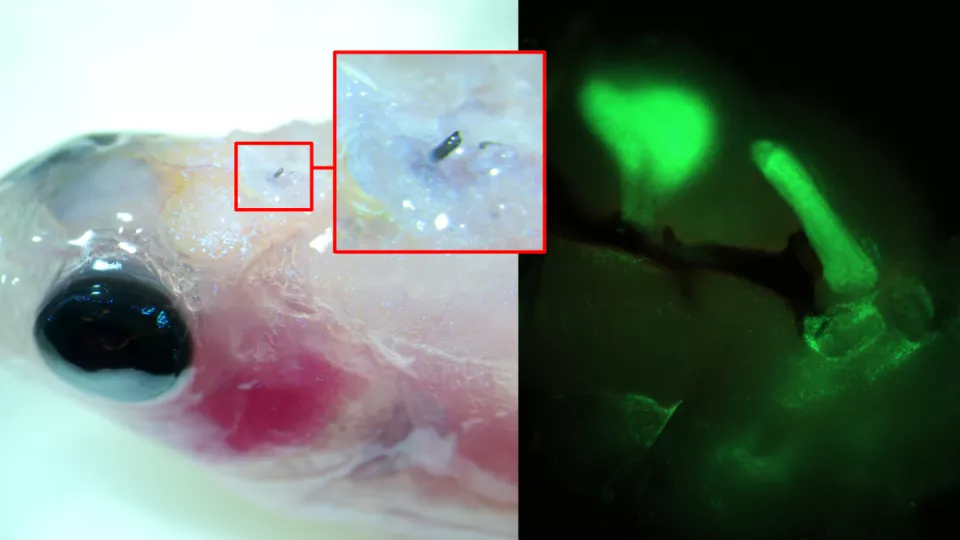
The diagnosis of “malignant brain tumor” is still largely tantamount to a death sentence for those affected. Even after surgery and subsequent treatment with chemotherapy and radiation, the cancer returns in most patients. As a result, life expectancy falls considerably. As few as 10 percent survive for five years. In experiments with cancer cells, however, research teams in Austria and Sweden have now succeeded in administering chemotherapeutic agents in a targeted manner with the aid of an ion pump. This should also lead to less severe side effects from the therapy.
“This is the first time an ion pump has been tested as a possible method for treating malignant brain tumors,” explains physicist Daniel Simon from the Laboratory of Organic Electronics at Linköping University in Sweden. “We have used cancer cells in the lab and the results are extremely promising. However, it will probably be another 5 to 10 years before we can use this new technology in the treatment of brain tumors.”
Scientists from the departments of biophysics and neurosurgery at the Medical University of Graz, Austria, used cells from glioblastomas for this purpose. This most common and aggressive type of cancer that can develop in the brain generally results in the shortest life expectancy for affected individuals. The reason is that even after surgical removal of the brain tumor, small pieces of the tumor embedded between the brain cells often remain. Since no operation, no matter how precise, can remove these cells without damaging the surrounding healthy brain tissue, attempts are made to kill them off as much as possible with radiation and chemotherapy. This can at least delay the recurrence of the tumor.
Medication targeted at the brain
However, these chemotherapeutic agents have a major disadvantage. Since they are usually administered either intravenously or in tablet form, they have to pass through the entire bloodstream – sometimes with severe side effects – until they reach the brain. In the process, they also have to cross the blood-brain barrier, which prevents countless substances from the blood from entering the brain at all. For this reason, very few drugs that could be effective against these tumors actually reach their destination.
Researchers at the Medical University of Graz and Linköping University have now developed a more effective method that is gentler on the patient’s body. They deliver gemcitabine, an extremely effective chemotherapeutic agent, directly to the tumor in the brain with the help of an implanted ion pump, thereby also bypassing the blood-brain barrier.
Sparing nerve cells
“The glioblastoma treatment currently used in hospitals damages cancer cells and nerve cells in equal measure,” says Linda Waldherr, a university assistant professor at the Medical University of Graz. “However, with the gemcitabine ion pump, we only target cancer cells, while at the same time leaving neurons undamaged. Our experiments on cultured glioblastoma cells also indicate that more cancer cells are killed with the ion pump than with manual treatment,” said Waldherr, who conducted the study, published in the journal Advanced Materials Technologies, together with researchers at Linköping University.
The ion pump, which transports the drug from an electrolyte reservoir into cells or a tumor, uses very little current, so neurons are not activated in the process. This also prevents unwanted nerve signals. Another plus is that thanks to the low current and voltage, no large power supplies or batteries are needed for any potential therapeutic technology.
Further testing
“Pressure in the brain is extremely sensitive. If you now use an ion pump rather than a liquid-powered device to transport the drug,, the intracranial pressure will not be affected,” explains Rainer Schindl, a biophysicist at the Medical University of Graz and co-author of the study. “The dosage is also controlled electrically, making the delivery of the chemotherapeutic agent extremely precise. The next step will be to use the ion pump to evaluate different chemotherapeutic agents that previously caused excessively strong side effects or were unable to cross the blood-brain barrier.”
The research project is co-funded by the Austrian Science Fund FWF under the 1000 Ideas Program, the Austrian Academy of Sciences, the Knut and Alice Wallenberg Foundation and the Swedish Foundation for Strategic Research.
Cover photo: Ion pumps (transparent plastic tubes) are installed on dishes in which vascularized brain tumors are cultivated, transporting the active substance into the cells via electrical activation. Source: © Linda Waldherr
Also interesting:
Using experimental LED implant to fight brain tumor cells (German only)
Better therapy of brain tumors through artificial intelligence (German only)








